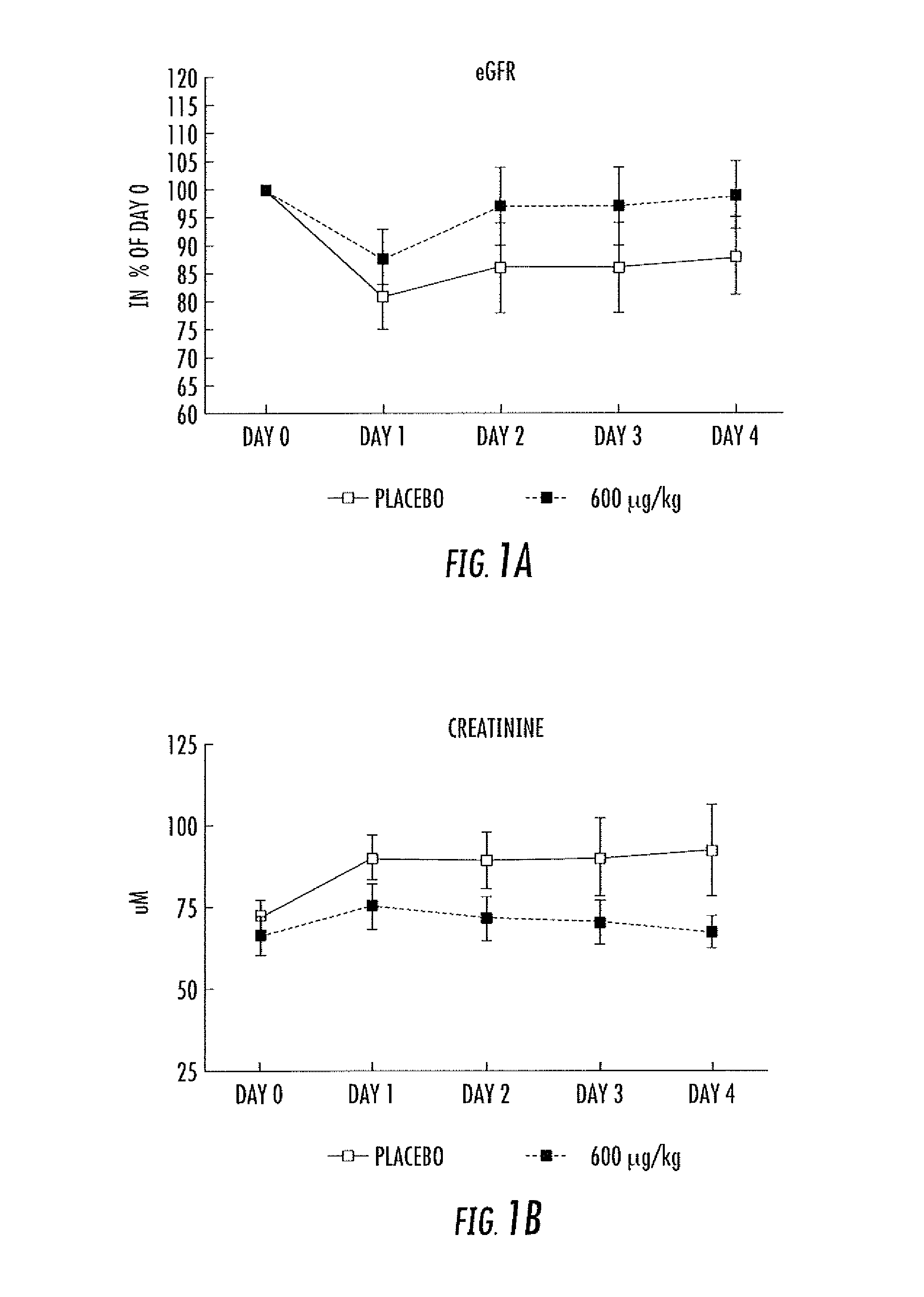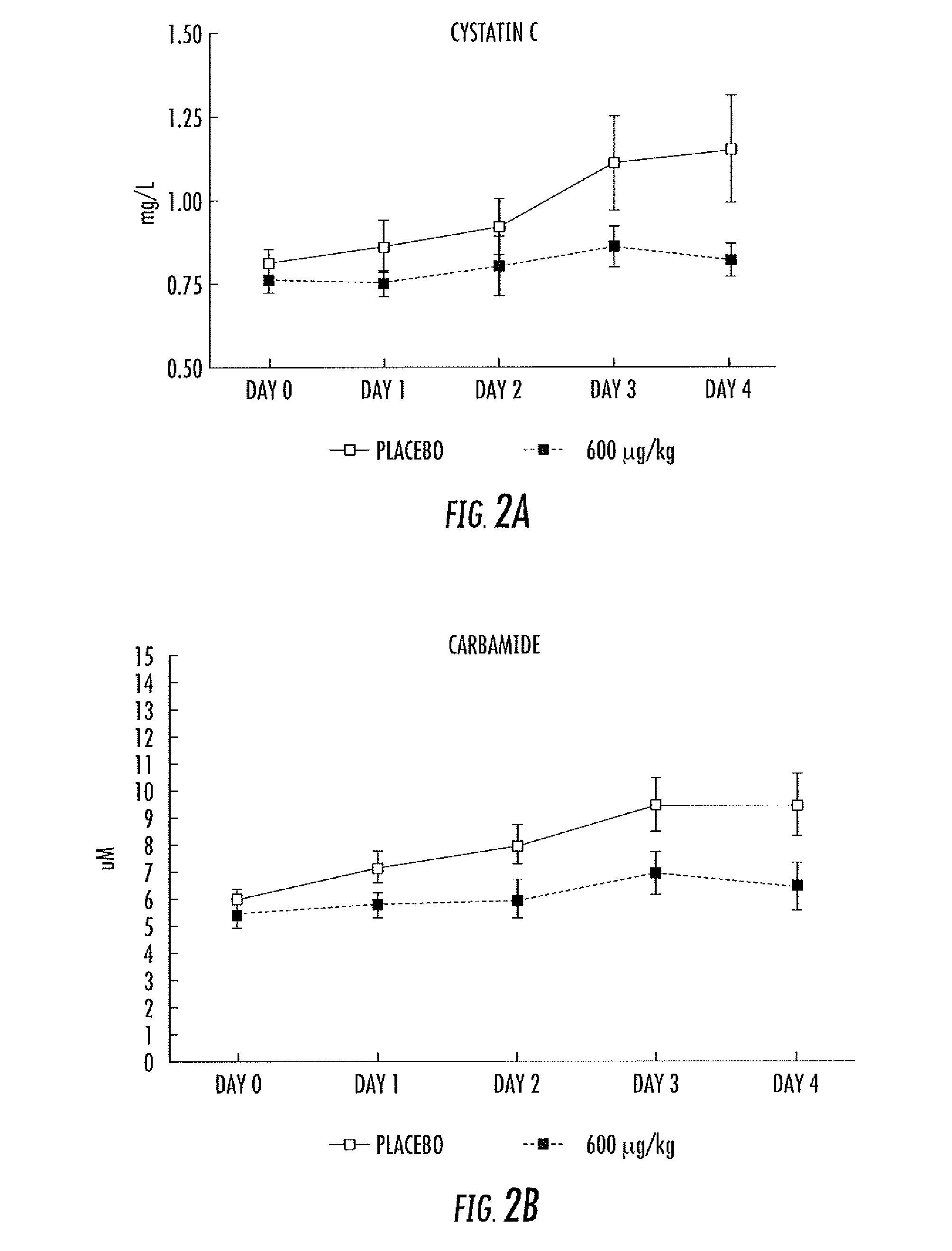Prevention of kidney injury or disease
a technology for kidney injury and kidney disease, applied in the field of dosing regimens, can solve the problems of prolonged hospitalization or even death, increased mortality and co-morbidity, etc., and achieve the effect of effectively treating or preventing aki
- Summary
- Abstract
- Description
- Claims
- Application Information
AI Technical Summary
Benefits of technology
Problems solved by technology
Method used
Image
Examples
example 2
[0104]This trial (The CS007 trial) was designed to study both short and long term efficacy signals after AP214 treatment.
[0105]Study Design
[0106]FIG. 4 shows the study design of the CS007 trial where also the two different dosage regimes of AP214 are described. The CS007 trial was designed to study both short and long term efficacy signals (FIG. 5).
[0107]Primary Aims[0108]Safety: Safety and tolerability vs. placebo[0109]Efficacy: Max post-operative change in absolute values of SCr compared to baseline within the first 7 days after surgery or until discharge from hospital, whichever comes first vs. placebo.
[0110]Secondary aims[0111]Composite:[0112]Assess the proportion of patients reaching the composite endpoint of death, need for RRT or a 25% reduction in renal function over a 90 day post-operative period vs. placebo.[0113]AKIN: Assess post-operative incidence of AKI within 48 hours post-surgery[0114]RIFLE: Assess post-operative incidence of AKI within first 7 days post-surgery.[011...
example 3
[0141]Evaluation of rate of infusion of AP214 (C5002).
[0142]To establish a suitable rate of infusion of AP214 a set of patient trials were performed.
[0143]Test Groups
[0144]Group 1 (n=40)
[0145]AP214 isotonic solution single ascending doses (25, 50 and 100 μg / kg) for intravenous infusion administered over 10 minutes, or placebo (saline infusion).
[0146]Group 2 (n=6)
[0147]AP214 isotonic solution single doses (100 μg / kg over 1 minute; 100 μg / kg over 30 seconds; 200 μg / kg over 30 seconds) for intravenous infusion.
[0148]Results
[0149]A large number of adverse events were reported, which was considered relating to short infusion times. Most frequently reported were ear discomfort, nausea, feeling cold, headache, paresthesia, erythema (all 6 subjects) and hot flush. One subject experienced 8 episodes of vomiting. The subjects who received 200 μg / kg AP214 over 30 seconds had more adverse events than those who received 100 μg / kg over 30 sec and 1 minute. Subjects receiving slower infusion rate ...
PUM
| Property | Measurement | Unit |
|---|---|---|
| Time | aaaaa | aaaaa |
| Time | aaaaa | aaaaa |
| Time | aaaaa | aaaaa |
Abstract
Description
Claims
Application Information
 Login to View More
Login to View More - R&D
- Intellectual Property
- Life Sciences
- Materials
- Tech Scout
- Unparalleled Data Quality
- Higher Quality Content
- 60% Fewer Hallucinations
Browse by: Latest US Patents, China's latest patents, Technical Efficacy Thesaurus, Application Domain, Technology Topic, Popular Technical Reports.
© 2025 PatSnap. All rights reserved.Legal|Privacy policy|Modern Slavery Act Transparency Statement|Sitemap|About US| Contact US: help@patsnap.com



